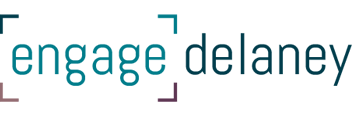Beyond Impacts: Sharing Information to Unlock the Power of Community
by Jessica Delaney, Principal, Engagement + Strategic Communications
Lately the Delaney team has been supporting a number of housing projects and initiatives. It’s important work that we are privileged to be able to support. Recently, on a call with my colleague Maggie, she told me about dropping off packages of supplies to folks living in parks or otherwise sleeping rough. She said: “I had to go to four different places before I had any takers because people had stuff.” The call from non-profits and community leaders on the ground had gone out for supplies and the community responded. There was momentary abundance on the streets, in the parks and in shelters. It got me thinking about engagement and how we usually start with engaging those who are impacted or interested in a project.
In the context of building supportive housing or opening shelter beds, there are often concerns and impacts on the neighbours, but it doesn’t mean the community doesn’t care. In fact, when organizations share a call to action, most often the community responds with giving. Volunteer Canada explains, with their Value of Volunteering Wheel, there are lots of benefits to volunteering including building a sense of belonging, wellbeing and purpose. Our contributions can be small, dropping off blankets and socks, or larger like volunteering on a committee, but the evidence shows that volunteering is just as good for the giver as the receiver. Often organizations share information on how to engage in a process but share less about how to engage in community building and being solution oriented. Government alone cannot “solve” the challenge of homelessness any more than they can address climate change on their own.
At a recent session, we shared ways for people to get involved, to contribute positively in their community and opportunities to give back. So, while I will always support sharing information about how to get “engaged”, I am also going to be a champion for helping to channel a community’s own capacity for kindness, connection and compassion. Our actions don’t have to be huge; it can be dropping off food at a local food bank or looking to understand what a person needs to be a bit more comfortable, but in doing these small acts we will build community and build our own sense of purpose and connection.




